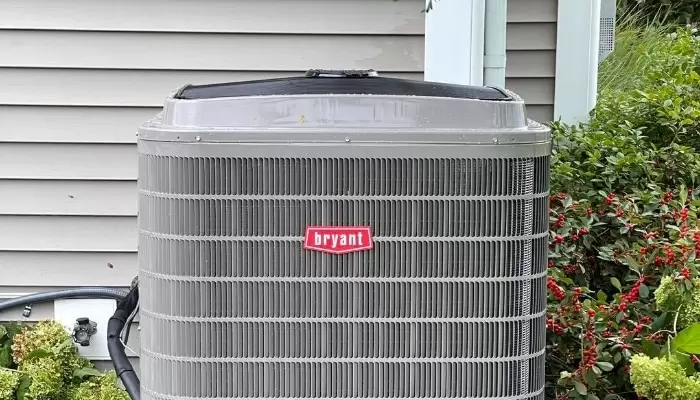Heating & Cooling Combined Into One Powerful Unit

Heat pumps have the capability of both heating and cooling your home all year long. Sears Heating & Cooling offers several different options of heat pumps to choose from when including our ductless mini-split options.
What Does A Heat Pump Do?
Although they may look exactly the same on the outside, an air conditioner and a heat pump are two completely different pieces of equipment. If you are looking for maximum energy efficiency, a heat pump may be the option for you. Specifically made for milder climates, a heat pump utilizes the heat indoors as well as the outside air to both heat and cool your home all year round.
Cold Winter Months
During the cold winter months, a heat pump will take any warmth in the air outside and transfer it into your home via refrigerant lines. Effectively, you are transferring heat from outdoors to indoors.
Keep in mind that once temperatures drop below 32 degrees Fahrenheit, your heat pump may struggle to heat your home efficiently so you will need to use your backup heat source whether that be a gas or electric furnace.
Hot Summer Months
During the warmer summer months, your heat pump will work in reverse of how it operates during the winter. This is made possible through a refrigerant “reversing valve” that standard air conditioners do not have.
The heat from inside your home will be collected at the indoor coil and transferred to the outside unit to be dispersed into the air. This is the same way that a standard air conditioner cools your home as well.
Cost
Because a heat pump system can both heat and cool your home, you can expect to pay more for one versus a standard AC unit or furnace. The upfront cost may be worth it based on the energy savings you will see on your utility bills
Recommended Models
- Bryant Ductless Heat Pump
- Bryant Heat Pump Model #226
- Bryant Heat Pump Model #285B
- Bryant Heat Pump Model #214D
FAQs
In general, the most opportune time is during the shoulder seasons of spring and fall when the demand for heating or cooling is lower. During these times, HVAC manufacturers and retailers often offer discounts and promotions to stimulate sales. However, it's essential to consider your specific climate and needs. In hotter regions, buying before the cooling season may be more advantageous, while in colder areas, purchasing before winter might be preferable. Researching deals, comparing prices, and consulting with HVAC professionals can help you make an informed decision.
Determining the right size heat pump for your house involves a calculation based on factors like the size of your home, insulation, climate, and your heating and cooling needs. It's best to consult with a professional HVAC technician who can perform a load calculation, also known as Manual J, to accurately size the heat pump. This calculation considers various aspects of your home's energy requirements and ensures you select a heat pump that is neither too small (inefficient) nor too large (wasteful). Relying on professional expertise helps you make the right choice for optimal comfort and energy efficiency.
Ductless heat pumps, or mini-split systems, offer several advantages. Firstly, they provide efficient heating and cooling without the need for extensive ductwork, making them suitable for older homes or spaces without existing ducts. They offer zone heating and cooling, allowing you to set different temperatures in different areas for enhanced comfort and energy savings. Ductless systems are also energy-efficient, as they use inverter technology to adjust output, reducing energy consumption. Additionally, they are easier to install and offer versatile placement options, making them a flexible and cost-effective solution for many homeowners.
In Ohio, the lifespan of heat pumps typically ranges from 10 to 15 years with proper maintenance and care. Factors influencing longevity include usage patterns, maintenance frequency, and environmental conditions. Regular maintenance, such as filter replacement, coil cleaning, and professional inspections, helps extend the heat pump's lifespan. Additionally, choosing a high-quality unit, ensuring proper sizing and installation, and following manufacturer recommendations contribute to maximizing the lifespan of the heat pump in Ohio's climate
A heat pump should be tuned up at least once a year to ensure optimal performance and efficiency. Ideally, scheduling maintenance before the start of the heating or cooling season is recommended. During a tune-up, a qualified technician will inspect and clean components, check refrigerant levels, test controls and safety switches, lubricate moving parts, and assess overall system functionality. Regular tune-ups help identify and address potential issues early, ensuring reliable operation and prolonging the lifespan of the heat pump.












